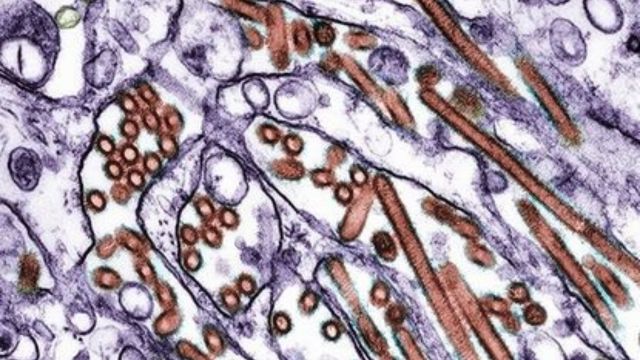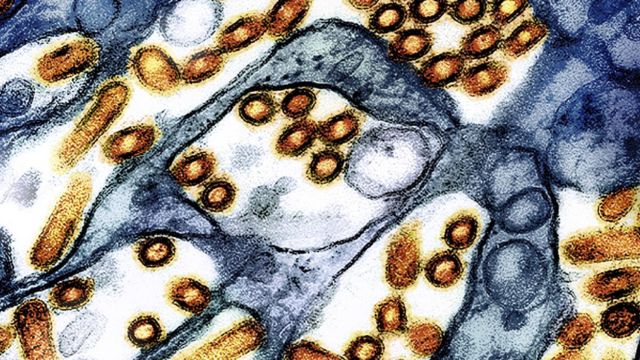Gov. Gavin Newsom declared a state of emergency on Wednesday as the H5N1 bird flu virus spread from the Central Valley to Southern California dairy herds, while federal officials confirmed the first case of severe illness in a hospitalized Louisiana patient — a concerning development as the virus continues to spread across the country via migrating birds.
The announcement by Newsom would enable for a more streamlined approach among state and local agencies to combat the virus, offering “flexibility around staffing, contracting, and other rules to support California’s evolving response,” according to a statement.
“Building on California’s testing and monitoring system — the largest in the nation — we are committed to further protecting public health, supporting our agriculture industry, and ensuring that Californians have access to accurate, up-to-date information,” the governor said in a statement. “While the risk to the public remains low, we will continue to take all necessary steps to prevent the spread of this virus.”
According to the USDA, 645 dairy cows in California have been infected with the H5N1 virus since August. The total number of cases nationwide is 865, dating back to March, when the virus was first found in Texas herds.
There have also been some infections in pet cats in California, three of which were reported on Wednesday.
According to the CDC, 61 persons have contracted the virus since March, with the vast majority working in dairies or commercial poultry operations. The majority experienced moderate sickness, such as conjunctivitis (pink eye) and upper respiratory discomfort.
In California, 34 people have been sick with H5N1, with all but one catching the virus through tainted dairy. The outlier was a toddler in Alameda County; the source of the virus has not been identified. A toddler from Marin County was also suspected of having the virus after consuming raw milk that was known to be infectious. The CDC was unable to confirm the child’s ailment.
The severity of the incidence in Louisiana has raised concerns among public health professionals. Federal officials refused to disclose information regarding the patient’s symptoms, sending all inquiries to the Louisiana Department of Public Health.
According to CDC investigators, the patient had intimate contact with sick and dead birds from a backyard flock on his home. The virus was a strain of the H5N1 bird flu known as D1.1, which is circulating in wild birds.
The strain circulating in dairy cows is referred to as B3.13.
The D1.1 variant was discovered in a Canadian teenager hospitalized with severe sickness in November. The source of that patient’s infection is unknown.

According to Demetre Daskalakis, director of the CDC’s National Center for Immunization and Respiratory Diseases, Louisiana health officials and the CDC are looking into the patient’s contacts and conducting additional genetic analysis of the patient’s virus to determine what, if any, changes may have occurred.
“These additional laboratory investigations help us to identify concerning changes in the virus, including changes that would signal an increased ability to infect humans, increased ability to be transmitted from person to person, or changes that would indicate that currently available diagnostics, antiviral treatments or candidate vaccine viruses may be less effective,” Daskalakis told reporters on Wednesday at a news conference.
Emails and phone calls to the agency went unanswered.
Nonetheless, research reveals that at least one virus isolate obtained from a dairy worker in Texas had acquired mutational alterations that enabled airborne transmission between animals and was completely fatal in laboratory ferrets.
However, like with the Canadian teen, it is assumed that the version was unique to the dairy worker and did not spread further.
Other research indicates that only one mutational change is required for the B3.13 variant to be transmitted efficiently across people.
Richard Webby, head of the World Health Organization’s Collaborating Center for Studies on the Ecology of Influenza in Animals and Birds, expressed concern about the virus’s D1.1 strain. “Not necessarily because I know it will evolve differently, but it does have a different combination of H5 and N1, which theoretically could help support a different set of mutations” compared to what researchers have found in studies with the B3.13 version.
Daskalakis stated that the CDC still believes the danger to the general population is minimal, and that the agency is striving to speed up influenza and bird flu testing in clinical and public health laboratories “to help accelerate the identification of such cases through its routine influenza surveillance.”
According to the governor’s office, “California has already established the largest testing and monitoring system in the nation to respond to the outbreak.”
Source: Gov. Newsom declares emergency in California after CDC confirms severe case of bird flu in Louisiana




